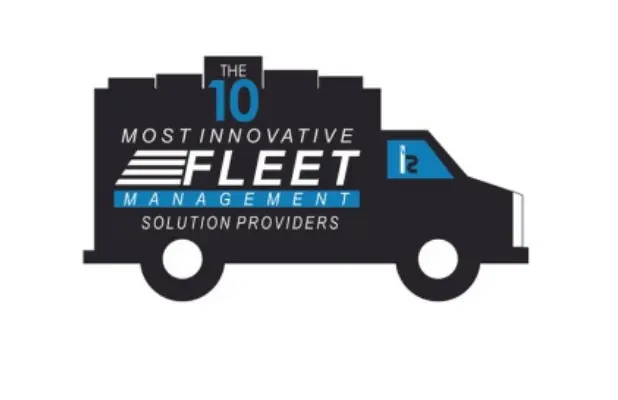Go from Lectures to Engagement
The financial risks of a poor safety culture couldn’t be higher. The Federal Motor Carrier Safety Administration (FMCSA) paints a grim picture of the situation: the cost of a large truck crash involving a fatality averages a staggering $14.6 million. Even a work-related crash with injuries can set you back over $300,000.
Typically, accident-prone fleets operate with a lack of engaging communication and meaningful safety activities. In such an environment, safety sessions become monotonous, failing to capture the attention of drivers or instill lasting safety habits.
On the other hand, fleet managers who cultivate a strong safety culture engage their drivers in impactful activities and conversations that go beyond just lectures. They prioritize open dialogue, hands-on training, and continuous feedback. This way, fleets operate in an environment where every team member feels empowered to contribute to, and take ownership of, fleet safety.
It’s time to shift from the passive, check-the-box mentality to an active, data-driven safety culture. We’ll give you a fresh framework for engaging safety meetings, using real data, interactive scenarios, and advanced topics that respect your drivers’ intelligence.
Topics Beyond the Obvious
Your seasoned drivers likely know the basics and common issues regarding driver safety. They understand that texting and driving is dangerous. So, how do you keep them engaged when discussing topics that they’ve heard before?
The answer lies in delving into the nuances and the deeper science behind everyday driving challenges. Let’s explore the three topics that can make an effective agenda for your next safety meetings.
A. Cognitive Distraction & In-Cab Tech Management
When we talk about distractions, it’s easy to focus on the obvious: when a driver’s hands are off the wheel or their eyes are off the road. But there is also the invisible distraction, the one happening inside your drivers’ heads. This is called cognitive load – the brain’s processing capacity.
Think about it: every interaction with a mobile device, every glance at a dispatch system, and every attempt to navigate a complex infotainment unit while the truck is in motion isn’t just a mere physical act. It’s a measurable drain on a driver’s mental bandwidth, taking precious “mental RAM” away from the critical task of driving.
To illustrate this, we categorize distraction into three types:
- visual (eyes off the road)
- manual (hands off the wheel)
- cognitive (mind off the task of driving)
Let’s take the seemingly harmless hands-free phone call. The driver’s hands remain on the wheel and their eyes are on the road. But their mental focus, their “mental RAM,” is allocated to the conversation. This dramatically slows their reaction time.
The National Safety Council offers a stark reality check: drivers engaged in hands-free conversations can miss seeing up to 50% of what’s around them, including critical details like a pedestrian stepping into a crosswalk or a red light ahead.
It’s a powerful and often overlooked truth: “hands-free” does not mean “mind-free.”
B. Driver Fatigue Management Beyond Hours of Service (HOS)
Hours of Service regulations are a vital legal baseline. They set the framework for how long a driver can be on duty. But let’s be honest: just because a driver is legally within their Hours of Service requirements doesn’t automatically mean they are fit for duty.
To foster a truly safe fleet, our discussions on fatigue must go deeper. We need to explore the critical role of sleep quality, the often-undiagnosed dangers of conditions like sleep apnea (and the transformative benefits of its treatment), and the cumulative effect of a consistently poor sleep schedule.
Instead of reiterating rules, frame this discussion around performance optimization. A driver who is genuinely well-rested is sharper, safer, and more efficient. They exhibit faster reaction times, make better decisions under pressure, and are less prone to errors.
The Centers for Disease Control and Prevention provides a sobering comparison that brings this to life: Being awake for 17 hours produces impairment equivalent to a blood alcohol concentration (BAC) of 0.05%. Extend this to a grueling 24 hours of wakefulness, and it’s comparable to driving with a BAC of 0.10%.
These figures are a compelling and undeniable argument for prioritizing quality rest as an indispensable tool that helps improve safety and reach peak performance.

C. Advanced Defensive Driving Techniques: Space & Speed Management
Defensive driving techniques mean more than avoiding accidents. It’s about mastering the dynamic environment of the road and anticipating hazards long before they become emergencies. This involves adopting mental frameworks like the Smith System or SIPDE (Scan, Identify, Predict, Decide, Execute).
The core principle here is proactive space management: constantly cultivating and maintaining a “space cushion” on all four sides of the vehicle. It also means adjusting speed not to the posted limit, but to the conditions: the slickness of rain-soaked asphalt, the reduced visibility of dense fog, or the unpredictable flow of heavy traffic.
To make this concept tangible and engaging, grab a whiteboard. Draw a realistic road scenario: imagine your truck comfortably in lane 2, only to find cars subtly boxing it in, leaving little room for maneuvers. Then, turn to your drivers and pose this challenge:
- “In this moment, what are your immediate escape routes?”
- “What are the ‘what-ifs’ if a sudden hazard, like a merging car or debris, pops up ahead?”
This kind of interactive, problem-solving exercise forces critical thinking and transforms abstract concepts into life-saving strategies. If you’re looking to dive into more scenarios, the FMCSA offers excellent resources on defensive driving with video footage.
Games & Activities
Lectures can only go so far. To truly boost engagement and information retention, you need to get your drivers involved. Below, you’ll find six hands-on activities, games, and discussions that turn safety lessons into memorable and shareable experiences.
1. Game: Hazard Perception Challenge
If you want to make safety exciting, use your fleet’s own data. Take 5-10 short, anonymized clips from your telematics or dashcam footage. Look for near-misses or subtle hazards: a car drifting, a pedestrian glued to their phone near a crosswalk, etc.
Play each clip. Have your drivers either write down or call out every potential hazard they spot. Award points for the sharpest eyes. This isn’t a lecture anymore. It’s a competitive skills-based game that hones their observational abilities in a fun and engaging way.
2. Activity: The Blind Spot
Some lessons are best learned by doing. This simple, yet incredibly powerful, demonstration requires nothing more than your truck and some cones (or willing participants).
Park a tractor-trailer safely in your yard.
Place cones or have people stand in all the vehicle’s known blind spots.
Have every single driver get into the cab and see for themselves what is and isn’t visible.
The moment of realization will be explicit. It’s a vivid and unforgettable way to reinforce the critical reality of blind spots.
3. Discussion: The After-Action Report
Learning from mistakes, or near-mistakes, is invaluable, too. Facilitate a no-blame discussion about a recent minor incident or a close call. Crucially, anonymize all details to encourage open dialogue.
For instance: “A driver had a hard-braking event last Tuesday to avoid a rear-end collision on I-85. Let’s break it down. What could have been done differently three minutes before that event to prevent the situation?”
This exercise fosters a collective problem-solving mindset, encourages proactive thinking, and turns potential failures into learning opportunities.
4. Game: The Pre-Trip Defect Hunt
Turn the repetitive, but vital, pre-trip inspection into a high-stakes challenge. Before the training, purposefully create several minor, non-hazardous defects on a truck: a loose fluid cap, a tucked-away piece of reflective tape that’s peeling off, a burnt-out marker light, or a slightly obscured license plate.
Next, divide the drivers into teams. Give them a standard inspection form and a time limit. The first team to correctly identify and list all the planted defects wins.
Such a gamified approach sharpens attention to detail and reinforces the life-saving importance of a thorough inspection every single time.
5. Activity: The Distraction Inventory
Here, you’ll go beyond saying “don’t use your phone” to uncover the less obvious, but equally dangerous, cognitive distractions. This is a guided self-reflection exercise.
First, ask employees to privately list every single thing that has taken their mental focus off the road in the last month. The list might include typing destinations into their GPS, worrying about a problem at home, planning their next stop, or having a lengthy conversation on a hands-free device.
Next, facilitate a group discussion (without asking them to share personal lists) about types of distractions and strategies for compartmentalizing them. For example, dedicating specific times during rest stops to handle personal calls or plan the next leg of the trip.
This exercise helps increase self-awareness and provides mental safe driving practices to maintain focus.
6. Scenario: The “What If” Gauntlet
This last one is for testing decision-making skills that go beyond the wheel. Prepare a few tricky, multi-stage scenarios that don’t have an easy answer. For instance:
- “You’re approaching your destination, but the weather has turned severe. Dispatch is pushing you to complete the delivery. What are your immediate steps?”
- “You feel a new vibration in your steering wheel, but you’re in an area with no safe place to pull over for the next 10 miles. What do you do?”
Present the scenario to the group and have them debate the best course of action, referencing company policy and regulations. The exercise will help transform passive policy review into an active problem-solving session that builds critical thinking muscles for when it counts.
Taking Advantage of Your Data
Your fleet generates a treasure trove of data every single day. It’s a goldmine for making safety discussions personal and relevant to your drivers. So, it’s time to forget about generic safety posters. Your data allows for highly specific conversations.
While leaderboards have their place, showing trends is often more impactful. For example:
“Team, we’ve seen a 10% increase in speeding events over 75 mph this quarter. Let’s talk about why. Are schedules too tight? Is there a specific route that’s causing issues?”
Even more compelling: create a heat map showing where hard-braking events occur most frequently. Use this visual to discuss specific route planning challenges or problematic intersections. This exercise uses concrete evidence to collectively solve problems and make operations safer.
Conclusion: The Goal is Engagement, Not Lectures
Ultimately, the most effective safety meetings aren’t about checking boxes or enforcing rules. They are data-informed, interactive, and focused on advanced technical topics that respect your drivers’ expertise. When done right, these meetings become vibrant forums where knowledge is shared, skills are honed, and a culture of continuous improvement flourishes.
A strong safety culture is a leading indicator of a high-performing and profitable fleet. Every single meeting, when thoughtfully designed and executed, contributes to building and reinforcing this vital culture.
What steps will you take to make your next safety meeting truly engaging?
Explore more resources, tips, and insights in the FieldLogix Resource Center.
Download This Article
Access This Article’s eBook
For more ideas and structured safety resources, you can explore the programs and materials offered by leading transportation safety organizations:
Federal Motor Carrier Safety Administration (FMCSA): Official regulations, safety programs, and outreach materials.
National Safety Council (NSC): Offers comprehensive defensive driving courses and resources for fleet safety.
Take a Tour & See How We Improve Fleet Safety
Frequently Asked Questions
What is discussed in a safety meeting?
A good safety meeting is a mix of review and prevention. You’ll cover recent trends from your fleet’s data (like an increase in hard-braking events), discuss any recent close calls or minor incidents (always in a no-blame format), and introduce proactive safety topics. This could be anything from seasonal reminders like driving in fog to a refresher on proper load securement.
The goal of safety meetings isn’t to lecture, but to start a conversation that keeps safety top of mind.
What are the different types of safety meetings?
Safety meeting types range from informal chats to structured sessions:
- Toolbox talks are quick, 5-10 minute informal huddles before a shift. They focus on a single, timely topic, like “Watch for increased pedestrian traffic this holiday weekend.”
- Monthly or quarterly meetings are more formal, longer meetings. They’re used to review performance data, conduct training on complex topics such as new regulations, and run interactive activities.
- Incident debriefs: A special meeting held after an accident or a significant near-miss. The entire focus is to break down what happened and identify learning opportunities to prevent a recurrence.
What are the safety measures for drivers?
Key safety measures for drivers fall into three main categories:
- Vehicle readiness starts and ends with a thorough pre-trip and post-trip inspection.
- Driver fitness for duty means more than being sober. It means being well-rested, managing fatigue, staying hydrated, and being mentally present. A tired or distracted driver is an unsafe driver.
- Defensive driving means maintaining a safe space cushion around a vehicle, constantly scanning for potential hazards, checking mirrors, and anticipating the mistakes of others. It’s a measure that teaches drivers to control their own vehicle and environment, no matter what others on the road are doing.
What is Take 2 for safety topics?
Take 2 is a simple but powerful mental safety check. It stands for “Take 2 Minutes to Think Through The Task.” Before starting any non-routine or potentially hazardous action, like backing into an unfamiliar, tight dock, the driver is encouraged to pause for two minutes. In that time, they should identify potential hazards (e.g., overhead obstacles, soft ground, poor lighting) and figure out how to control them (e.g., get out and look, use a spotter, find a better position).
It’s a habit that replaces rushing with deliberate and safe action.
What is a good safety topic to talk about?
The best safety topics are relevant and timely. Instead of picking something generic, look at your own operations.
- Look at your data: If your telematics show a spike in speeding incidents, talk about speed management, not speeding tickets. Discuss the impact of speed on stopping distance and vehicle control.
- Be seasonal: Talk about winter driving and chaining up before the first snow, not after. In the summer, discuss fatigue and hydration.
- Focus on the fundamentals: You can never go wrong with evergreen topics, such as blind spot awareness, distraction prevention, or safe backing procedures. The trick is to find a fresh way to present them, for example, using an interactive game or a hands-on demonstration.







